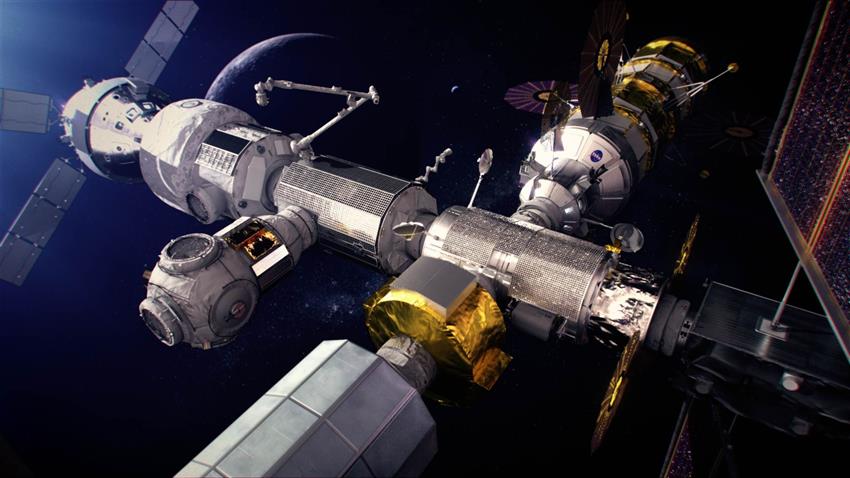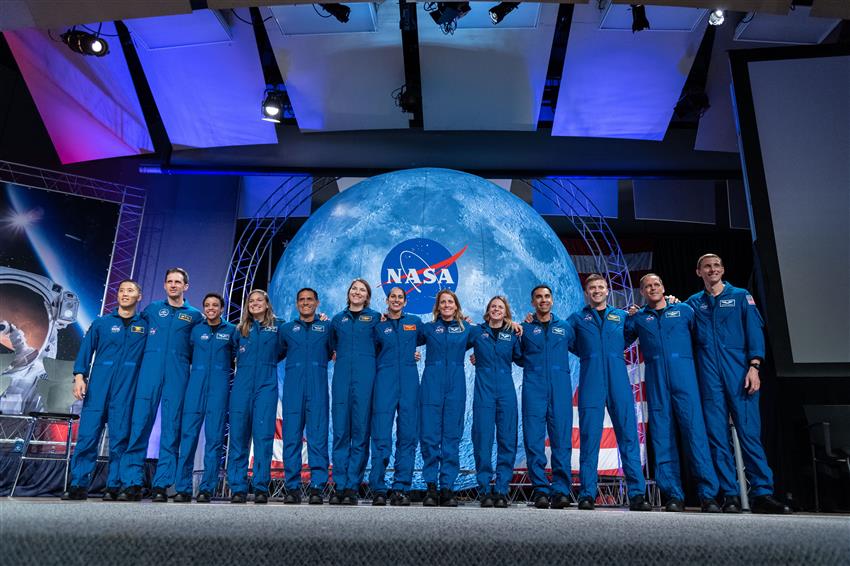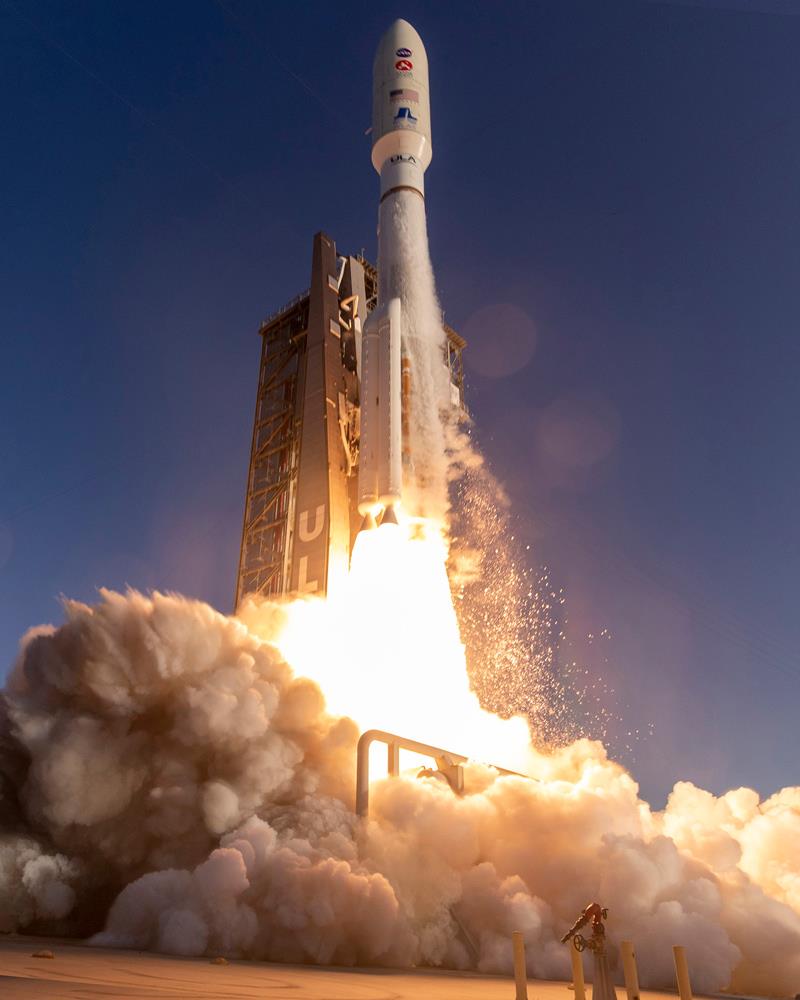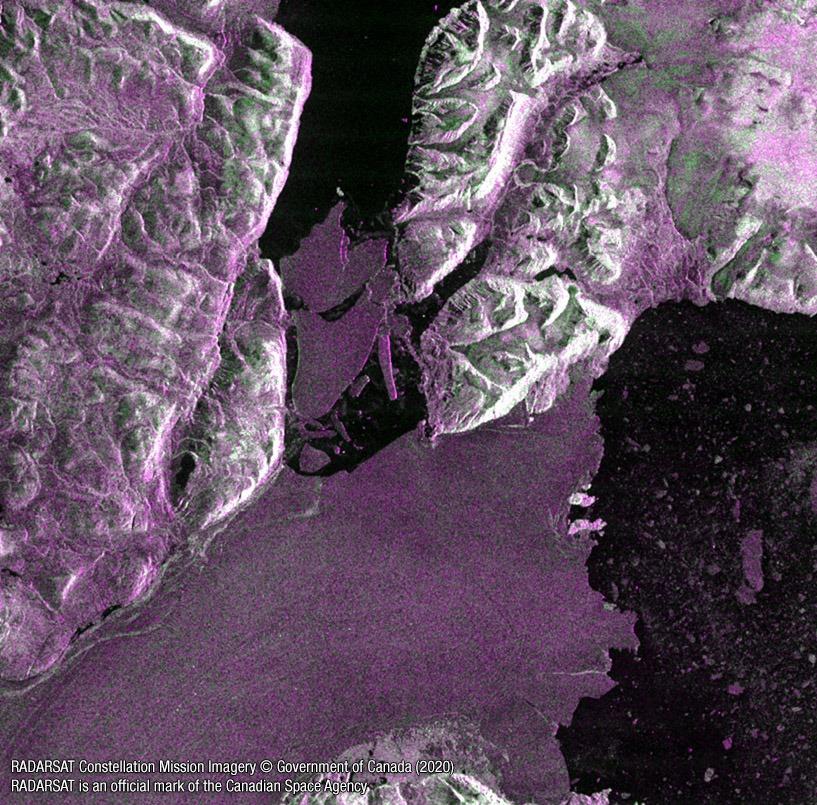Our top space highlights of
It's an understatement to say that was an exceptional year. As the year draws to a close, here's a look at some of the most compelling, inspirational and incredible moments for Canada in space. Happy New Year!
Graduation day for Canadian Space Agency astronauts Jenni Sidey-Gibbons and Joshua Kutryk
Canadian Space Agency (CSA) astronauts Jenni Sidey-Gibbons and Joshua Kutryk celebrated the end of their basic training, along with their NASA classmates. Selected in , Jenni and Joshua are the CSA's 13th and 14th astronauts. As part of a new generation of space explorers, they are ready to represent Canada on missions to the ISS (ISS), the Moon, or perhaps even Mars. Their class was the first to be supervised by a CSA astronaut, Jeremy Hansen.
SpaceX mission carries astronauts to ISS for the first time
SpaceX launched its first crewed mission, known as Crew Dragon Demo-2, to the ISS. After spending two months in space, NASA astronauts Robert Behnken and Douglas Hurley splashed down in the Gulf of Mexico off the coast of Pensacola, Florida. Shortly before Crew Dragon started its journey back to Earth, robotics controllers on the ground used Canadarm2's cameras to inspect the exterior of the capsule.
Following a successful uncrewed test flight to the ISS in , which was first greeted by CSA astronaut David Saint-Jacques, Crew Dragon Demo-2 is a major milestone in NASA's Commercial Crew Program. It also marked the first launch of astronauts from American soil since the end of the Space Shuttle Program in .
The CSA increases investments in the space sector during the COVID-19 pandemic
Over the past year, the global pandemic has led to loss of jobs and revenue for companies. To mitigate the situation in the space sector, the CSA set an action plan in motion and made additional investments, which stimulated the industry and helped maintain numerous positions held by highly qualified personnel (including students breaking into the field) and create additional jobs.
The CSA almost doubled the existing budgets of a number of its funding programs, for a total investment of $52 million over two years.
The additional funds injected into the Canadian economy will have a direct impact on about 100 projects led by SMEs and big companies. Twelve Canadian universities also stand to benefit.

The RADARSAT Constellation Mission celebrates one year in space
The RADARSAT Constellation Mission (RCM), Canada's trio of Earth observation satellites, takes daily scans of our country and its waters. Since their launch in , the three identical satellites have each orbited Earth almost 5,500 times.
Canada's family of RADARSAT satellites have been monitoring our country for 25 years. The high-quality data they send down to Earth helps advance cutting-edge science to understand our planet. But these satellites don't last forever. Canada is already planning for the future: the CSA is seeking innovative solutions from industry on how to meet Canada's increasing need for Earth observation data.
This video highlights the launch of Canada's RADARSAT Constellation Mission (RCM), which took off on , aboard a SpaceX Falcon 9 rocket from Vandenberg Air Force Base, California. (Credits: CSA, SpaceX)
NASA's Perseverance rover launches to Mars
NASA's Mars mission lifted off from Space Launch Complex 41 in Cape Canaveral, Florida, to begin its journey to Mars. Its rover, Perseverance, is scheduled to land on , in Jezero Crater, a location just north of the planet's equator. The rover will search the former river delta for signs of past life on the red planet.
With the support of the CSA, Canadian scientist Dr. Chris Herd of the University of Alberta is contributing his expertise to this historic mission, making Canada part of this first-ever quest to collect, seal, and store Martian rock samples for possible return to Earth.
Canadian satellite imagery helps monitor sea ice and ice shelves
Since , Canada's RADARSAT satellites have been providing images to help scientists monitor the Arctic and understand how climate change is affecting sea ice and ice shelves over time. For example, their images have allowed scientists to observe the decrease of the minimum sea ice coverage (the extent of sea ice normally seen during end of summer/early fall in the Arctic) for the past 25 years and validate climate prediction models. Sea ice loss hit a record high in the summer of . In , Nunavut's Milne Ice Shelf, the last fully intact ice shelf in Canada, lost 43% of its size when a piece slightly bigger than Manhattan Island broke off. Later in the month, the Arctic's largest remaining ice shelf, Greenland's Spalte Glacier, lost a portion of ice roughly the size of the city of Vancouver.
The CSA welcomes a new President
The CSA welcomed Lisa Campbell as its new President, replacing Sylvain Laporte who had been President of the Agency since . Ms. Campbell has a long record of serving Canadians, including in her previous position as the Associate Deputy Minister, Veterans Affairs Canada. She has done extensive regulatory work on the collection and trade of data, particularly in emerging business models. At the International Astronautical Congress's Heads of Agencies event, Ms. Campbell noted the instrumental role she envisions space will play in Canada's future: "This a significant time for Canada's space program and it is very meaningful for me to be part of it. I want space to be a true economic engine for Canada and to contribute to not only building back the economy, but building it back better."

Lisa Campbell, President of the CSA. (Credit: CSA)
OSIRIS-REx spacecraft collects a significant sample from asteroid Bennu
NASA's OSIRIS-REx spacecraft successfully stowed away a sample from near-Earth asteroid Bennu to return to Earth. The spacecraft lowered itself towards the surface and, without landing, extended its robotic arm to make contact with the surface of Bennu for about 10 seconds. During that time, it released a burst of nitrogen gas that caused dust and gravel to be stirred up, capturing 60 to 2,000 grams of material in the arm's sampling head.
Two days after "high-fiving" asteroid Bennu, NASA's OSIRIS-REx mission team received images that indicate the spacecraft collected more than enough material to meet one of its main mission requirements – acquiring at least 60 grams of the asteroid's surface material. After a successful stowing procedure, the sample is now in the spacecraft's Sample Return Capsule, where it will be kept safe during the spacecraft's journey back to Earth. The OSIRIS-REx spacecraft remains in excellent health and is scheduled to return to Earth in . The CSA's contribution to the mission will allow Canada to receive a portion of the asteroid material.
This series of 82 images was captured on during the OSIRIS-REx mission's TAG sample collection event. It shows the SamCam imager's field of view as the NASA spacecraft approaches and touches down on asteroid Bennu, at sample site Nightingale. The team on Earth received confirmation of successful touchdown at 6:08 p.m. ET. Preliminary data shows the sampling head touched Bennu's surface for approximately six seconds, after which the spacecraft performed a back-away burn. (Credit: NASA)
The Disasters Charter celebrates its 20th anniversary
The International Charter "Space and Major Disasters," an international effort to put space technology at the service of emergency responders around the world, celebrated its 20th anniversary. Since the Charter entered into effect in , Canada has supported relief efforts in more than 538 disasters worldwide by providing RADARSAT satellite images. Canada is a founding member of the Charter, which was signed in by the European Space Agency (ESA) and France's space agency, the Centre national d'études spatiales (CNES), and in by the CSA.

In , monsoon rains caused disastrous floods and landslides in the central and eastern districts of Nepal. As a founding member of the International Charter "Space and Major Disasters," Canada provided images from the RADARSAT Constellation Mission satellites after the floods occurred. This image was colourized to highlight the flooded areas. (Credit: RADARSAT Constellation Mission Imagery © Government of Canada (2020). RADARSAT is an official mark of the CSA. Value-added products generated by Natural Resources Canada Emergency Geomatics Service)
20 years of humans living aboard the ISS
This year marked 20 years of continuous human presence on the ISS. This unique research laboratory is considered the most ambitious peaceful international collaborations ever, allowing us to test technologies and conduct scientific experiments that have positive impacts on our lives on Earth.
Canada is one of the Station's partners, along with the United States, Russia, Europe and Japan. We contributed cutting-edge robots Canadarm2 and Dextre, and the Mobile Base System, a transport and storage platform.
It is largely thanks to the ISS that the international space community is now setting its sights on deep-space destinations like the Moon and Mars. The Station has been a vital part of space exploration for two decades, serving as a test bed that enables us to prepare to explore deeper into space.
The CSA awards a contract to MDA for Canadarm3
As part of its plans to join the return to the Moon, the CSA awarded a contract worth $22.8 million to Brampton-based MacDonald, Dettwiler and Associates Ltd. (MDA) to establish the technical requirements to build Canadarm3.
The milestone is good news for the Canadian space industry – hundreds of Canadian companies are expected to work with MDA on the development of Canadarm3.
Canadarm3 will be composed of a next-generation smart robotic arm, a small dexterous arm and a set of specialized tools. Using advanced machine vision, cutting-edge software and advances in artificial intelligence, the highly autonomous system will be able to perform tasks on the Lunar Gateway without human intervention.

An artist's concept of Canadarm3, Canada's smart robotic system, located on the exterior of the Gateway, a small space station in orbit around the Moon. (Credits: CSA, NASA)
Two CSA astronauts will fly to the Moon
The CSA announced the signature of the Canada–U.S. Gateway Treaty, a historic agreement that confirms Canada's participation in the next major international collaboration in space exploration.
In return for contributing Canadarm3, a smart robotic system, to the Lunar Gateway, Canada receives a range of opportunities for lunar science, technology demonstration and commercial activities, as well as two astronaut flights to the Moon.
Thanks to this Treaty, a CSA astronaut will be part of Artemis II, the first crewed mission to the Moon since . Artemis II, planned to launch in , would make Canada the second country to have an astronaut fly around the Moon. The Treaty also confirms a second later flight for a CSA astronaut to the Lunar Gateway.
Canada's participation in the Lunar Gateway is the cornerstone of our Space Strategy, which aims to leverage Canadian strengths like robotics, while advancing science and innovation in exciting areas like artificial intelligence, biomedical technologies, food production, and research on the impact of climate change on Earth's atmosphere.






